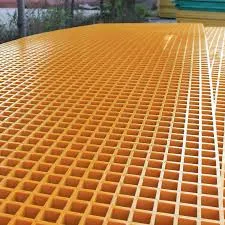
-
 Afrikaans
Afrikaans -
 Albanian
Albanian -
 Amharic
Amharic -
 Arabic
Arabic -
 Armenian
Armenian -
 Azerbaijani
Azerbaijani -
 Basque
Basque -
 Belarusian
Belarusian -
 Bengali
Bengali -
 Bosnian
Bosnian -
 Bulgarian
Bulgarian -
 Catalan
Catalan -
 Cebuano
Cebuano -
 China
China -
 China (Taiwan)
China (Taiwan) -
 Corsican
Corsican -
 Croatian
Croatian -
 Czech
Czech -
 Danish
Danish -
 Dutch
Dutch -
 English
English -
 Esperanto
Esperanto -
 Estonian
Estonian -
 Finnish
Finnish -
 French
French -
 Frisian
Frisian -
 Galician
Galician -
 Georgian
Georgian -
 German
German -
 Greek
Greek -
 Gujarati
Gujarati -
 Haitian Creole
Haitian Creole -
 hausa
hausa -
 hawaiian
hawaiian -
 Hebrew
Hebrew -
 Hindi
Hindi -
 Miao
Miao -
 Hungarian
Hungarian -
 Icelandic
Icelandic -
 igbo
igbo -
 Indonesian
Indonesian -
 irish
irish -
 Italian
Italian -
 Japanese
Japanese -
 Javanese
Javanese -
 Kannada
Kannada -
 kazakh
kazakh -
 Khmer
Khmer -
 Rwandese
Rwandese -
 Korean
Korean -
 Kurdish
Kurdish -
 Kyrgyz
Kyrgyz -
 Lao
Lao -
 Latin
Latin -
 Latvian
Latvian -
 Lithuanian
Lithuanian -
 Luxembourgish
Luxembourgish -
 Macedonian
Macedonian -
 Malgashi
Malgashi -
 Malay
Malay -
 Malayalam
Malayalam -
 Maltese
Maltese -
 Maori
Maori -
 Marathi
Marathi -
 Mongolian
Mongolian -
 Myanmar
Myanmar -
 Nepali
Nepali -
 Norwegian
Norwegian -
 Norwegian
Norwegian -
 Occitan
Occitan -
 Pashto
Pashto -
 Persian
Persian -
 Polish
Polish -
 Portuguese
Portuguese -
 Punjabi
Punjabi -
 Romanian
Romanian -
 Russian
Russian -
 Samoan
Samoan -
 Scottish Gaelic
Scottish Gaelic -
 Serbian
Serbian -
 Sesotho
Sesotho -
 Shona
Shona -
 Sindhi
Sindhi -
 Sinhala
Sinhala -
 Slovak
Slovak -
 Slovenian
Slovenian -
 Somali
Somali -
 Spanish
Spanish -
 Sundanese
Sundanese -
 Swahili
Swahili -
 Swedish
Swedish -
 Tagalog
Tagalog -
 Tajik
Tajik -
 Tamil
Tamil -
 Tatar
Tatar -
 Telugu
Telugu -
 Thai
Thai -
 Turkish
Turkish -
 Turkmen
Turkmen -
 Ukrainian
Ukrainian -
 Urdu
Urdu -
 Uighur
Uighur -
 Uzbek
Uzbek -
 Vietnamese
Vietnamese -
 Welsh
Welsh -
 Bantu
Bantu -
 Yiddish
Yiddish -
 Yoruba
Yoruba -
 Zulu
Zulu
grp chemical product
Innovations and Trends in GRP Chemical Products
The widespread adoption of glass-reinforced plastic (GRP) chemical products has transformed various industries over the past few decades. Known for their exceptional strength-to-weight ratio and corrosion resistance, GRP materials are increasingly replacing traditional materials such as metals and wood in numerous applications. This article explores the innovations and trends surrounding GRP chemical products, highlighting their benefits and the future of this exciting field.
Understanding GRP Products
Glass-reinforced plastics are composite materials that combine glass fibers with a resin matrix. This combination creates a product that boasts remarkable durability while remaining lightweight, making it ideal for applications in sectors such as construction, automotive, aerospace, and marine industries. The fundamental properties of GRP materials include high tensile strength, excellent chemical resistance, low thermal conductivity, and minimal moisture absorption.
Innovative Applications
One of the most significant trends in GRP chemical products is their growing utilization in the construction industry. With the increasing demand for sustainable construction practices, GRP materials are being employed to create lightweight, energy-efficient building components. From roofing sheets to architectural façades, the flexibility and adaptability of GRP allow for innovative designs that were previously unattainable with traditional materials.
In the automotive sector, manufacturers are embracing GRP to produce lightweight vehicle parts, enhancing fuel efficiency and reducing emissions. The automotive industry is under pressure to innovate with eco-friendly materials, and GRP composites are becoming a popular choice for vehicle production. Furthermore, GRP’s robustness makes it an ideal candidate for components that require resistance to harsh environmental conditions, such as undercarriage parts and body panels.
Environmental Impact
grp chemical product

Another significant area of development is the focus on eco-friendly production processes for GRP chemical products. As environmental issues take center stage globally, manufacturers are seeking ways to reduce their carbon footprint. Advancements in production techniques, such as the use of bio-based resins and recyclable glass fibers, are being explored to create more sustainable GRP options. The integration of these materials not only addresses environmental concerns but also enhances the market appeal of GRP products.
Challenges and Solutions
Despite its many advantages, the GRP industry faces challenges that need to be addressed. One of the primary concerns is the disposal of GRP waste, as traditional recycling methods are not effective for composite materials. However, ongoing research is focused on developing innovative recycling techniques, such as chemical recycling, which aims to break down GRP products into their constituent materials for reuse.
Moreover, the rising cost of raw materials poses another challenge for manufacturers. Fluctuations in resin prices and raw glass fiber can impact production costs and overall profitability. In response, companies are exploring alternative sourcing strategies, forging partnerships with suppliers, and investing in advanced manufacturing technologies to enhance efficiency and reduce expenses.
Future Outlook
The future of GRP chemical products looks promising as technology advances and demand continues to grow across various sectors. As industries increasingly recognize the benefits of GRP, investment in research and development is likely to accelerate. Enhanced manufacturing processes, improved material characteristics, and innovative applications will drive the expansion of this market.
In conclusion, GRP chemical products have emerged as a game-changer across multiple industries, demonstrating their remarkable versatility and efficiency. With ongoing innovations, an emphasis on sustainability, and a commitment to overcoming challenges, the future of GRP is bright. As we continue to explore new applications and advancements in this field, GRP materials are poised to play a critical role in shaping the future of manufacturing and construction, offering a reliable and eco-friendly alternative for generations to come.
Latest news
-
Exploring the Benefits of Top Hammer Drifter Rods for Enhanced Drilling PerformanceNewsJun.10,2025
-
High-Precision Fiberglass Winding Machine for GRP/FRP Pipe Production – Reliable & Efficient SolutionsNewsJun.10,2025
-
FRP Pipes & Fittings for Shipbuilding - Corrosion-Resistant & LightweightNewsJun.09,2025
-
Premium FRP Flooring Solutions Durable & Slip-ResistantNewsJun.09,2025
-
Premium Fiberglass Rectangular Tanks Durable & Lightweight SolutionNewsJun.09,2025
-
Tapered Drill String Design Guide Durable Performance & UsesNewsJun.09,2025









